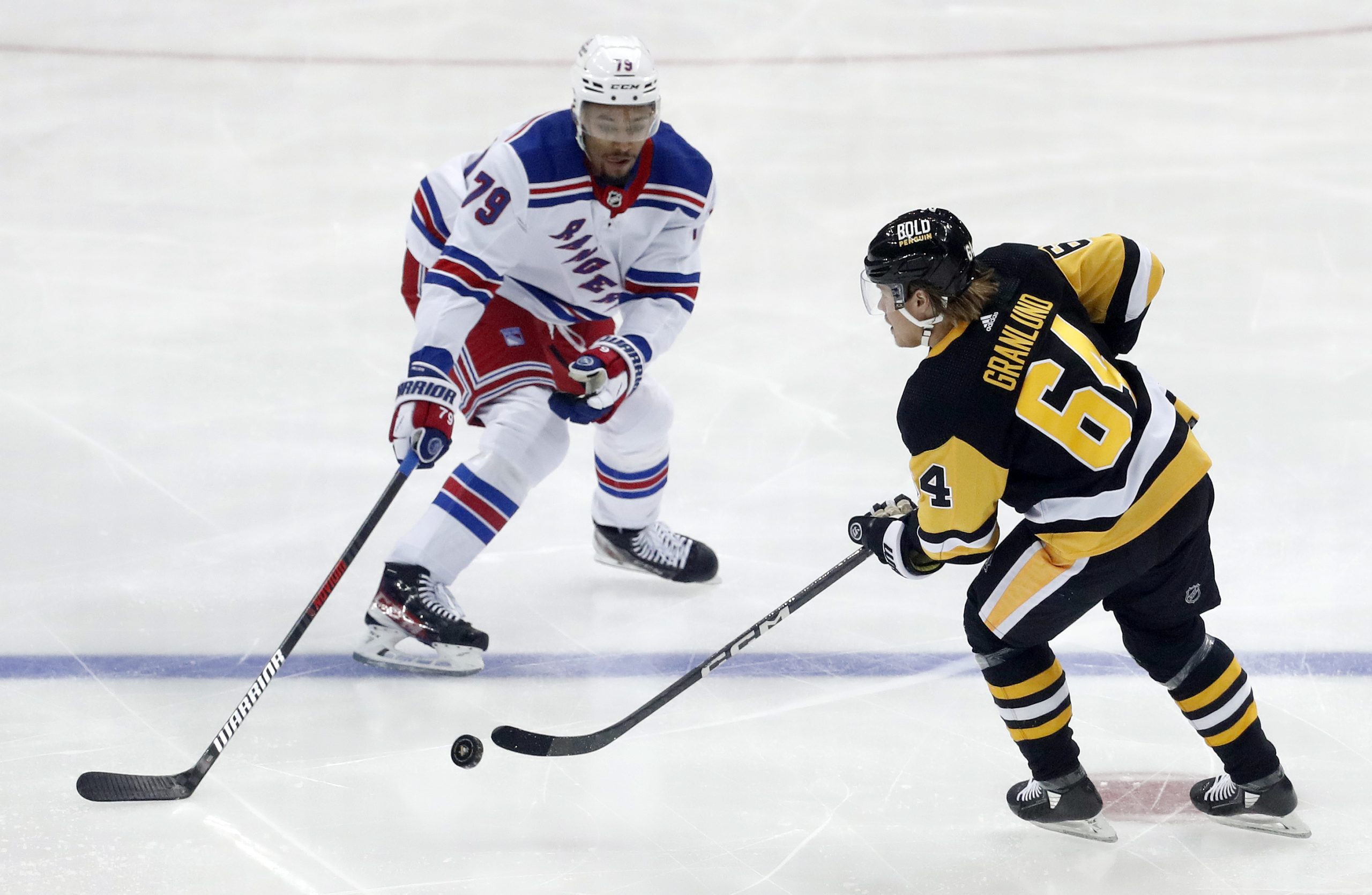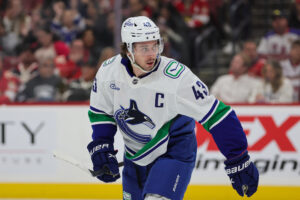NHL player development seems to always result in more questions than answers. How likely is it for a top pick to pan out? What makes a player a “steal”? Last Word On Hockey will be starting a new series on how to properly develop prospects from all different spots throughout the draft. With forwards drafted out of North American hockey leagues between 2005 and 2015, in the first round, covered, let’s shift to forwards drafted out of Europe.
NHL Player Development Of Top-Ten Picks
In the span of 2005 through 2015, there were 10 players selected within the top-ten out of Europe. Within that grouping, there were three players who made their NHL impacts (15+ games in a single season) in their DY+3 season, or, in other words, after two years of development following their selection in the draft. Those players were Michael Frolik, Mikael Granlund, and Nikita Filatov. In this piece, we will look at Granlund.
In these pieces, Last Word will be using Even-Strength Offence Goals Above Replacement (EVO), Even-Strength Defence Goals Above Replacement (EVD), Wins Above Replacement (WAR) and Goals Above Replacement (GAR). All those analytics come from Evolving-Hockey (paid subscription required).
NHL Player Development Of Mikael Granlund
Mikael Granlund, drafted ninth overall by the Minnesota Wild in the 2010 NHL draft, came out of the HIFK organization in Finland. In his DY-1 season, he largely played in the U20 SM-Liiga, scoring 21 goals and 36 assists for 57 points in 35 games, for 1.629 points per game. That ranked first amongst the 10 aforementioned forwards in DY-1 production. The following year, Granlund was brought up to the top men’s Finnish league, scoring 13 goals and 27 assists for 40 points in 43 games, for 0.93 points per game. That ranked second out of those same 10 players in DY production. After being drafted, Granlund would remain in Finland for the next two seasons before making his first NHL impact.
The following season, again playing in the top men’s league, Granlund scored eight goals and 28 assists for 36 points in 39 games, for 0.923 points per game. That ranked second amongst the eight forwards still outside the NHL in DY+1 production. In his final season in Finland, Granlund scored 20 goals and 31 assists for 51 points in 45 games, for 1.133 points per game. That ranked second out of the three players still outside the NHL in DY+2 production.
How Granlund Was Used
Finally coming over to North America to play professionally, Mikael Granlund would split between the NHL and AHL. In the AHL, he scored 10 goals and 18 assists for 28 points in 29 games, landing just below a point per game. Meanwhile, he played 27 NHL games, averaging 13:11 time on ice per game. With what is essentially a third-line role in a limited amount of games, Granlund scored two goals and six assists for eight points. Analytically, he was a below replacement-level player. His EVO (-2.1) and EVD (-0.9) were both fairly poor, though his EVD wasn’t terrible for a rookie. That led to his WAR (-0.6) and GAR (-3.5) to be negative value for his team.
His second professional season was different. Granlund became a full-time NHLer in year two. Playing in 63 games, he averaged 17:19 per game, a much larger role. With it, he scored eight goals and 33 assists for 41 points, a much, much better statline. With the raw production taking a big step forward, so too did his analytics. His EVO (4.8) did a complete 180, while his EVD (0.9) went above replacement-level. As for his WAR (2.0) and GAR (10.8), his underlying numbers sky-rocketed.
Mikael Granlund Maintains Strong Year Two Impacts Into Year Three
Granlund, after a solid year two, would remain a full-time NHL player. Playing in 68 games, he averaged 17:54 per game. In that role, he scored eight goals and 31 assists for 39 points. While his raw stats slipped a bit from the last season, his analytics remained pretty much identical. His EVO (9.4) was the only analytic to drastically improve. Meanwhile, his EVD (0.9), WAR (2.0) and GAR (10.8) all remained the exact same.
After that third season in 2014-15, Granlund would play parts of the next four NHL seasons with the Wild. In that span, he played 303 games and scored 75 goals and 154 assists for 229 points. In the midst of that fourth season, he was dealt to the Nashville Predators. He would play parts of five seasons with Nashville, recording 51 goals and 111 assists for 162 points in 268 games. This season was his fifth with the Predators, and he was dealt to the Pittsburgh Penguins at the deadline. So far, he has played 10 games as a Penguin, and has two total points.
Hindsight On The 2010 Draft And The Mikael Granlund Selection
The biggest question is whether or not a player was the right choice. While Granlund didn’t reach the potential that one would expect from a top-ten selection, with a career-high of 69 points, he was still the right choice within reason. There was only one forward taken in the first round after the Granlund selection that has played more games: Charlie Coyle (28th overall). There’s also only two players with more career points after he was picked: Vladimir Tarasenko (16th) and Evgeny Kuznetsov (26th). But, none of those guys went top-15. There’s one player, a defenseman, who went 12th overall that could have been the better choice: Cam Fowler.
When looking at Granlund’s development, he received generally solid ice time early in his career. His coach, Mike Yeo, in his early years was also given a decent, though below-average, grade in regards to developing young players. He ranked 42nd out of the 60 coaches included with a 42.5 grade. He was not traded to another team early on in his career either, which also has a negative impact on players’ potentials. There was no coaching turnover in his first three seasons either. Simply put, the player could not take that next step. But, then again, the player development of any player, let alone Mikael Granlund, is black and white.
Raw stats from Elite Prospects and Hockey-Reference
Coaching Grade research developed by Kyle Pereira
Main Photo: Charles LeClaire-USA TODAY Sports






